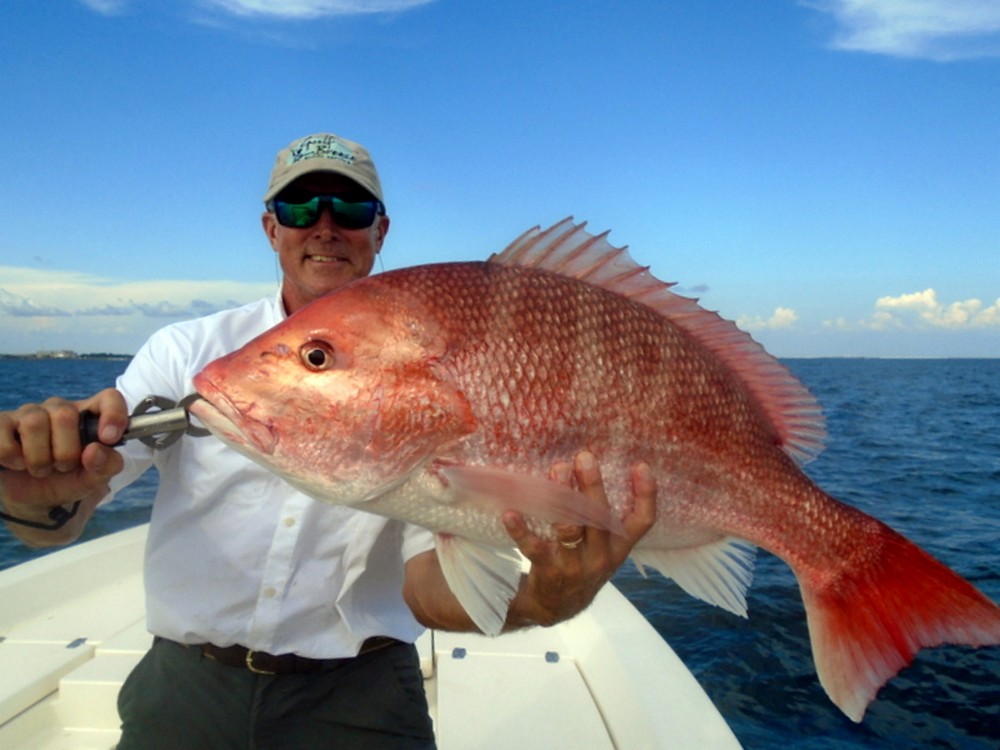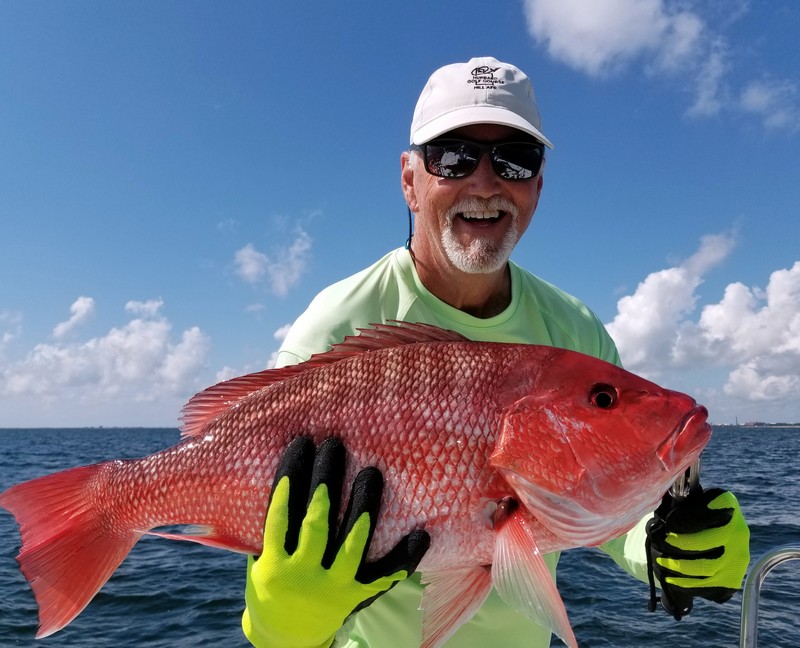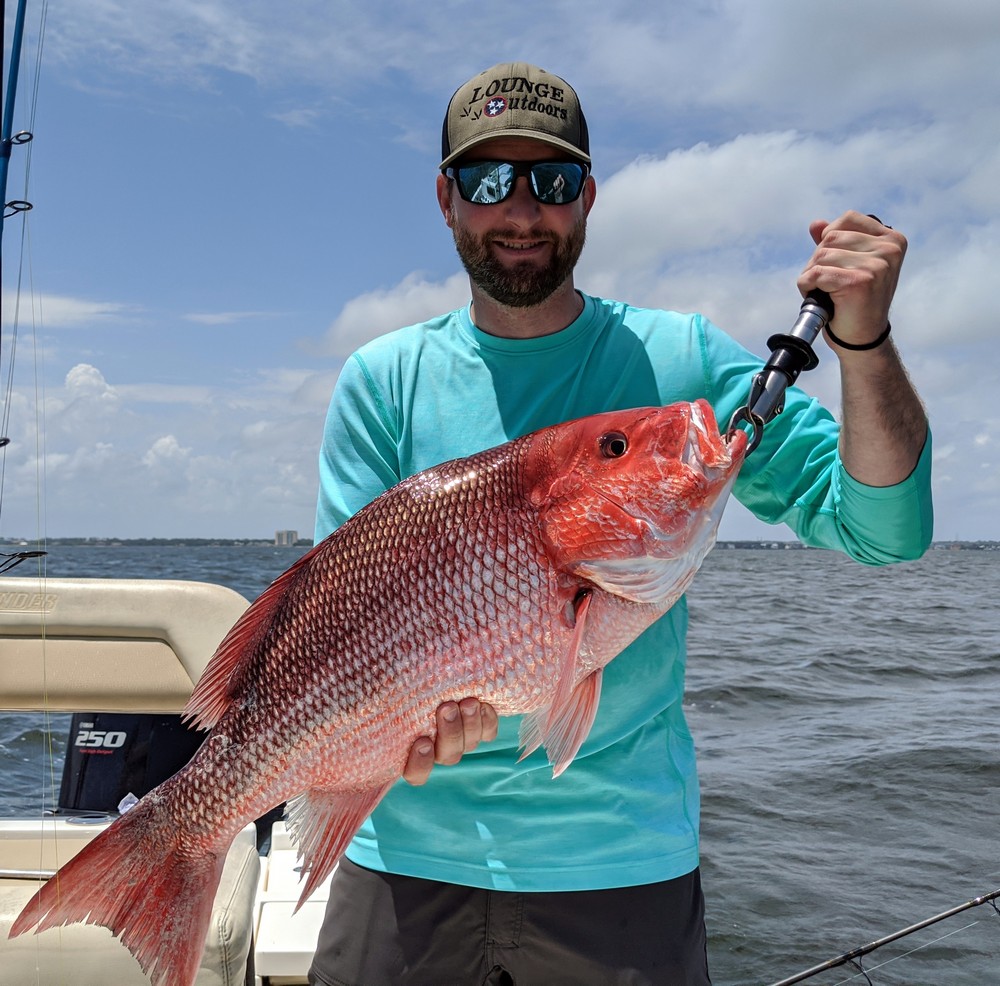
Once again, Red Snapper season is about to open on the Florida Emerald Coast. This year the season runs 11 June through 25 July. Each angler can keep 2 fish per day with a 16” minimum overall length. The Red Snapper is one very tasty and powerful fish. Read on if you would like a few Captain’s tips on how to get your limit.
Let’s start at the fish and work our way back up to the boat. Red Snappers like structure; pretty much any structure that holds bait, has moving water, and offers good cover from apex predators that, much like humans, find snappers quite the tasty treat. If you don’t have a “private” spot, it’s OK. Escambia and Santa Rosa counties, as well as a few others, have done a great job building artificial reefs and providing the GPS coordinates to the public. Pretty much any of these spots will hold fish. Also passes, bridges, wharves, buoy anchors, pretty much any place you find structure can suffice.

The real battle on these beasts occurs in the first 10 feet after hook-set. You just have to get the fish up off the bottom. If you don’t pull them up quickly after they realize they are hooked, rest assured they will run into the structure and cut you off. My clients and I have caught multiple snappers with several hooks still in their mouths, sometimes attached to leaders with swivels and even sinkers attached. It’s a testament to the Snappers’ ability to turn and run, leaving you with an empty line and bruised ego.
Good terminal tackle is paramount. I use stout 7/0 circle hooks, 5 to 6 foot 80# monofilament leaders, good swivels, and enough weight to get the bait to the bottom while keeping the line as close to vertical as possible. You have to be able to feel the bottom. More on this later.

If you choose spinning gear, get ready for the hardest pull you can imagine. I use at least a 6000 series reel with braided line in the 40# range, or preferably an 8000 series reel with 65# pound braided line. You could go bigger. It’s not too nerdy. A stiff rod with heavy or extra heavy action will give you a chance. Note I only use braided line on spinning gear. You must have some “give” in the rig or a snapper will literally shake the hook out of their mouth. Spinning rods generally provide enough give to allow you to keep the line tight while the snapper shakes.
Conventional tackle is generally a good choice. I like 4/0 reels spooled with 60# monofilament line, on top of 50# class stout rods. When targeting the really big ones, I use 6/0 reels with 80# mono with an 80-100# class rod. It’s hard to have too much rod and reel in your hands, albeit difficult for some to believe. Until you catch one or two… Remember, the real battle occurs in the first 10 feet after hookset. If you survive that, you have a good chance of putting a fish in the boat. I didn’t mention drag settings. Set them tight – tighter than you think you should – close to locked down. A big snapper pulling drag has an advantage you have to offset with strength, technique, and luck. It’s better to not allow the drag to spin much, if any.

Bait is the easy part. These fish will hit cut bait, squid, and live bait. Any Gulf minnow is usually a winner, as are pinfish, pigfish, and the ever-elusive croaker. Cut menhaden is also a go-to for me. If you really want a huge strike, try sending a live blue runner (aka hardtail) down there. And hold on. Snappers will also hit artificial baits. Any good swim bait, jigged up and down off the bottom, can yield a strike. When these fish are hungry, nothing you put down there is safe.
Setting the hook with cut or live bait is an art. I like to send a Carolina rig to the bottom and come up 4 or 5 cranks. Just let the bait sit there naturally, while holding the rod horizontally. When you feel a bite, give the fish the bait by lowering your rod slightly, even until the tip is in the water. Then reel a couple turns. If you feel resistance, pull your rod up with authority, but DON’T JERK. Jerking is not your friend when using circle hooks. I have ruined many a bass fisherman with this technique. It’s counterintuitive to avoid a strong jerk to set the hook, but you have to train yourself to just pull with authority. Let physics set the hook for you. Once you know you’ve got one on, and you will know, pull your rod near vertical and reel. That’s how you get the fish 10 feet off the bottom. It’s easier said than done. Trust me on this one. After that, it’s a gentle battle to the surface. That is, unless the fish decides to head south. Just keep your line tight and fight the fish with the rod, not the reel. Reel when you can. Pull with the rod.
I know this is a lot of information. If you follow these steps you will increase your chances of putting your limit in the boat. Heck, you might do it anyway, but this technique certainly works for me. If you have 22 minutes to spare, check my episode of Florida Sportsman Watermen “Pensacola Bay Insanity” in which we land quite a few nice Red Snappers. It’s archived on YouTube. Here’s a link to watch it on my website.
Have fun and be safe out there!







